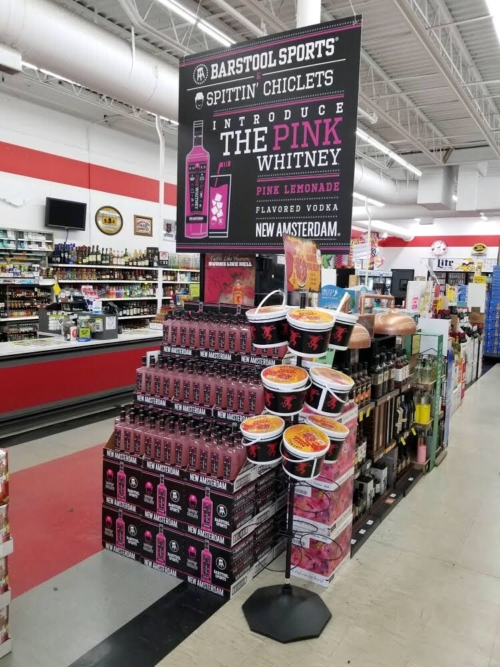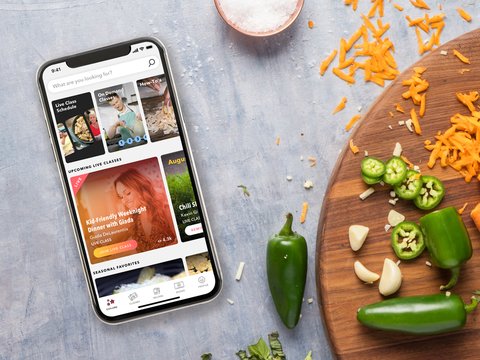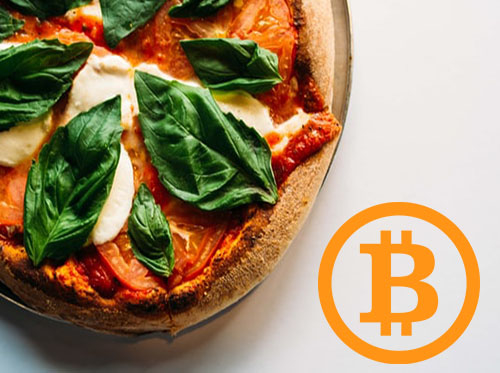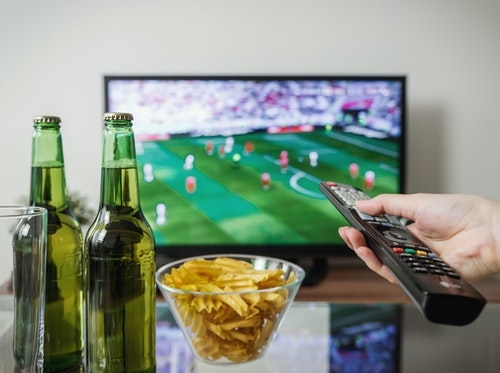Explained: 4 Deals Powering the “At-Home-ification” of Stadium Foods and the War Against the Couch
Over the past few months, we’ve observed a convergence of sports and Food & Beverage delivery services:
-
July, 2020: The LA Dodgers teamed with Postmates and a specialized ghost kitchen startup, Home Team Kitchens, to deliver stadium food to fans around LA. Demand for the service is already double their projections. (Link)
-
August, 2020: The NBA named DoorDash as its first-ever official brand partner in the on-demand food delivery category. (Link)
-
August, 2020: The US Open partnered with Grey Goose to deliver at-home “Honey Deuce” cocktail kits. Although the stadium will be empty, fans around the country can enjoy the event’s signature beverage while they watch the matches on TV. (Link)
-
September, 2020: The NFL named Postmates as its first-ever official brand partner in the on-demand food delivery category. (Link)
We love this. It’s a natural progression of recent media and commerce trends.
A Quick Reminder of How Media Converged with Food & Beverage CPG and Delivery Services
We’ve written before about the power of beloved content, IP, and personalities to drive discovery and purchases in the F&B (food and beverage) space. From Barstool Sports selling a million cases of flavored vodka in one month to Complex selling $10 million of branded hot sauce in one year, media properties with impassioned followings have a unique ability to activate their fans through F&B products. Successful brands leverage their digital content to both drive direct-to-consumer sales and also help their branded products stand out on crowded grocery shelves.

Endcap featuring Barstool Sports and their Pink Whitney vodka partnership with New Amsterdam.
Personalities and IP properties first monetized their influence by driving their fanbase towards certain products on behalf of sponsors and advertisers (particularly often in F&B). Now these personalities and IP properties increasingly seek to own a greater share of that end purchase. Either by directly selling their own products to consumers on their own platforms, or by licensing their brand to sponsors and collecting royalties on co-branded products.
We’ve observed the same trend extend to food delivery services. Popular media brands and personalities are leveraging their influence to add value in the highly commoditized food-delivery space (we’ve also written about this before).
For example, Barstool Sports partnered with Slice to power nation-wide pizza delivery, and The Food Network partnered with Amazon to enable shoppable cooking shows. Similarly, Chrissy Teigen partnered with Blue Apron to allow subscribers to order the meals featured in her cookbook. Another powerful manifestation of this trend is the rise of “ghost kitchen” partnerships. Rachel Ray and Bon Appetit have both partnered with food delivery platforms and ghost kitchens to power “virtual restaurants” that bring the most popular recipes from their content to fans nationwide.
Food & Beverage Is Central to the Experience of Sports Fandom
Sports properties power supreme levels of fandom. Inspiring even greater audience loyalty than the most influential personalities and media brands. So the merger of food CPG and services and sports IP is a natural next step in the increasing convergence of food media and commerce.
Sports fans are constantly bombarded with messaging for F&B products during every game. In fact, the top three biggest brand sponsors across professional and college sports are all beverage brands.
And it makes sense why: food and drink are an essential component of the “gameday experience”. It’s akin to ritual; generating a meaningful sense of connection, community, tradition, and nostalgia.
Going to a Dodger game? You get a Dodger Dog.
The Masters? Pimento sandwich.
The US Open? Honey Deuce.
Kentucky Derby? Mint Julep.
Wimbledon? Pimm’s Cup with a side of strawberries and cream.
This ritual transcends the stadium: 1.3 billion chicken wings were consumed on Super Bowl Sunday last year. And 325 million gallons of beer were purchased. Buffalo Wild Wings built an international chain based on a simple premise: “Wings. Beer. Sports”.
But why should fans be limited to “stadium foods” and “at-home gameday foods”?
Sports and F&B Are Teaming Up in Exciting New Ways
Leagues and teams are the centerpiece of our most popular cultural rituals that revolve around food and drink. They currently monetize this influence through in-stadium concessions and lucrative sponsorships. For example, Anheuser-Busch InBev is paying the NFL $1.4 billion for Bud Light to be the league’s official beer from 2016 to 2022—giving Bud Light exclusive rights to use the NFL logo in its advertising, feature team logos on their cans, and use league video footage on its social media channels.
However, we believe that there are additional opportunities for sports IP-owners to capture a greater share of the value that they create in the F&B space. And to improve the gameday experience for fans outside the stadium.
The “At-Home-ification” of Stadium Foods and the “War Against the Couch”
Ghost kitchens and on-demand food delivery platforms empower sports properties to directly monetize the consumption demand that these properties are creating. And delivery services can harness the power of sports IP to differentiate in the commoditized food-delivery space, driving increased discovery and transactions on their platforms.
While the timing of these initiatives may seem related to the global pandemic, the “at-home-ification” of sports food isn’t a COVID-driven initiative. These partnerships were already in development, and like every other industry trend, COVID merely accelerated their evolution. Even when fans are allowed to pack stadiums again, there’s no reason teams and leagues shouldn’t also power best-in-class gameday experiences to their fans watching from home.
Leagues and teams are seeking to develop a non-cannibalistic omnichannel fan experience. It’s tougher than you’d think. As the at-home viewing experience improves—with the rise of HDTV, “whip-around” channels like The Redzone Network, social media, on-demand food delivery, fantasy sports, and in-game betting—local teams and stadiums are engaged in a war against the couch.
And the couch is winning.
Teams, which invest billions in stadiums that may only be used 8 to 10 times per year, generate a significant share of local revenues in their stadiums on game days. So to close the gap between the comfort and convenience of home with the incomparable buzz of the in-stadium experience, teams have been investing in making the in-stadium experience more comfortable and convenient to lure fans from the couch to the bleachers. For example, the 49ers installed 1,200 Bluetooth beacons around their new stadium to power their mobile app, which lets fans find the best available parking spaces, watch video replays on their phones, order food and merch directly to their seats, and shows them where the closest bathroom is and which has the shortest line.
But this merger of the couch and the bleachers can be a two-way street. Teams don’t have to fight against the couch or risk cannibalizing local revenues. They can also embrace the couch.
It can be both. Not either, or.
Build Bridges to Your Fans: How Capture Billions of Market Value Across Adjacent Industries
Just as teams are investing in bringing the comforts and conveniences of the at-home experience into the stadium, teams must also bring signature components of the stadium experience to fans watching the game at home. They must meet their fans wherever they are, and provide the best possible experience for every environment in which fans interact with their brand. The result is a holistic fan experience in which sports properties capture more of the value that they create, and fans enjoy an optimal gameday experience regardless of where they choose to watch.
Tucker Kain, the President of Dodgers Business Enterprise, said of the team’s innovative ghost kitchen initiative,
“We want to build a bridge with fans in a meaningful way”.
We love the notion of building a bridge with fans. And it makes us think: how else, and where else, can teams build these bridges?
Perhaps this ecosystem of sports-fan F&B experiences isn’t limited to the stadium or the couch. Will teams begin opening their own local sports bars? Time Out built out an international brick-and-mortar food hall business that generates ~$30 million in annual revenue. And it’s been rumored that Barstool Sports is opening branded bars and pizzerias. Will The Madison Square Garden Company follow a similar path? It can leverage its assets—which include the New York Knicks, Rangers, an eSports team, the regional TV network that broadcasts their games, as well as a premier restaurant and nightlife operator called The Tao Hospitality Group—to open the ultimate “3rd space” for New York sports fans who want to watch the game somewhere besides the couch or the stadium.
As sports properties strive to capture a greater share of the economic value that they create across adjacent industries, we also believe it’s important for them to provide premium experiences wherever and whenever fans are interacting with their brand.
We’ve said it before but it bears repeating. The moral of the story? Follow your fans.
—
Ping us here at anytime. We love to hear from our readers.



